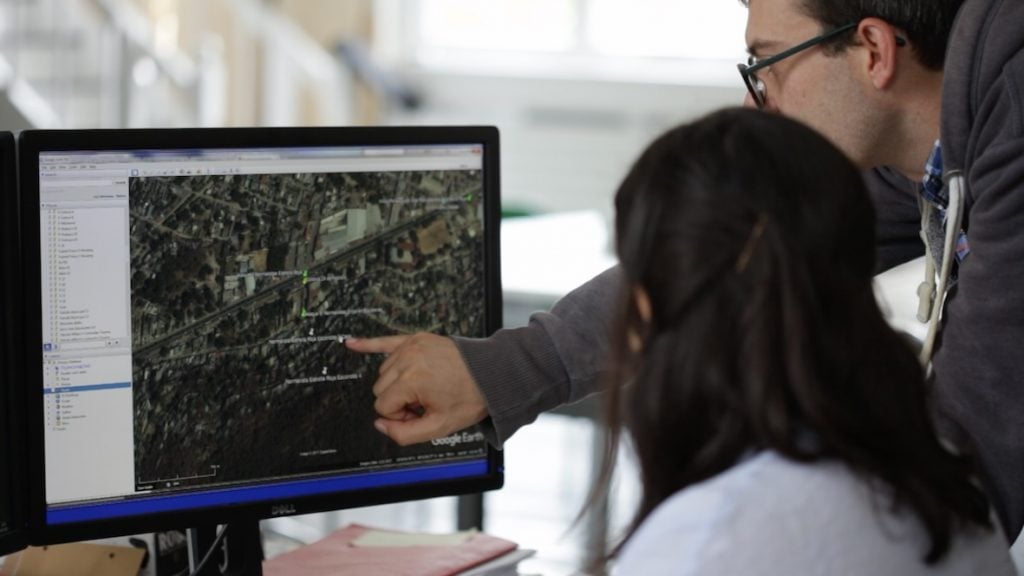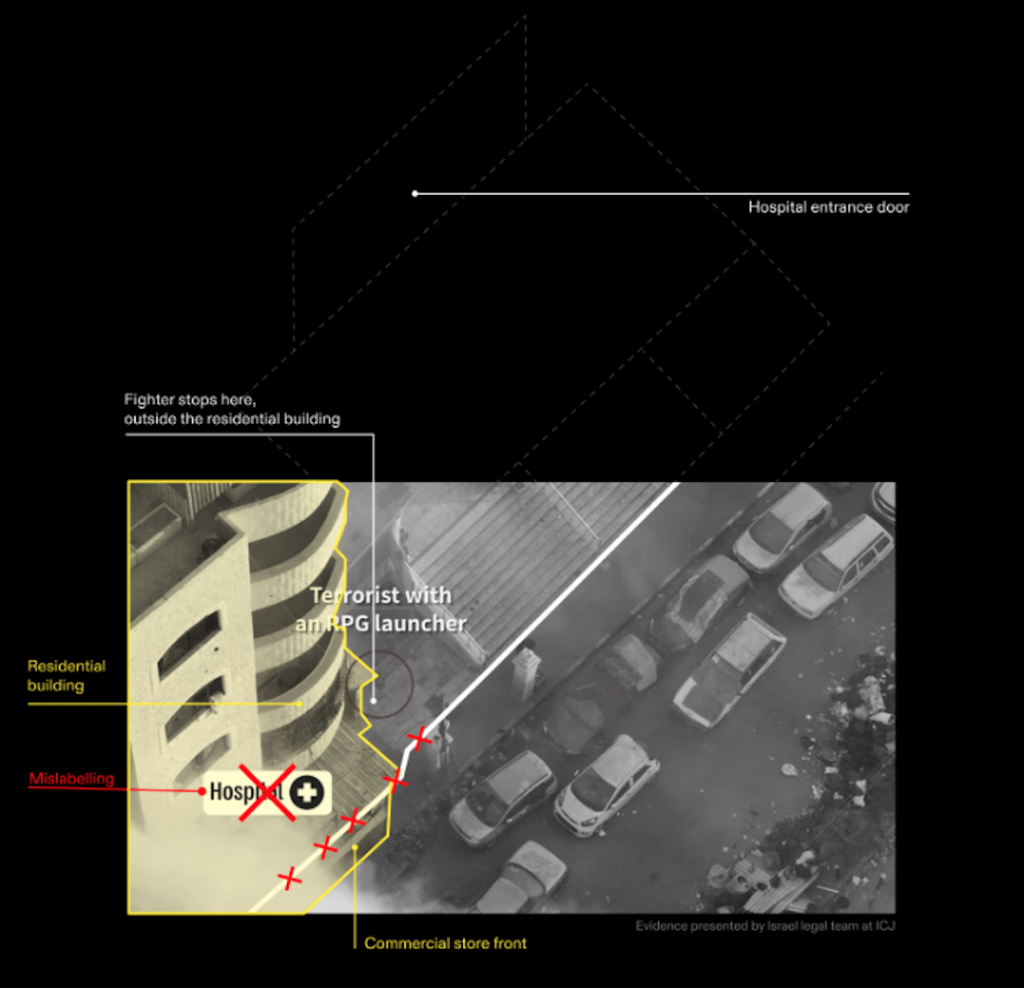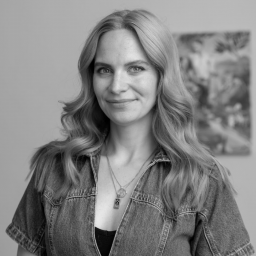Art World
New Forensic Architecture Report Disputes Israeli Evidence at ICJ Hearing

Last month, the United Nation’s International Court of Justice (ICJ) held public hearings in proceedings launched by South Africa against Israel over the conflict in Gaza. South Africa had asked the ICJ for an urgent order declaring that Israel was in breach of its obligations under the 1948 Genocide Convention in its crackdown against Hamas since the attacks on October 7.
During the hearing on January 12 Israel accused South Africa of presenting a “profoundly distorted” view of hostilities, and its lawyers presented maps, videos, images, and annotated diagrams in their defense against accusations of genocide.
Today, the research and art collective Forensic Architecture has released its own analysis of the visual material that was presented by the Israeli legal team at the ICJ hearing. According to the group, the findings suggest multiple instances of misrepresentation, mislabeling, and misleading descriptions.
Using geolocation, 3D modeling, pattern analysis, and open-source intelligence, the London-based team reviewed the materials according to three categories: authenticity, annotation, and interpretation. The first category was used to assess whether the material was tampered with and the second was used to gauge whether elements in the material have been correctly labeled or annotated. The team then evaluated whether the claims made by the Israeli legal team were consistent with the visuals presented.
“We found eight instances in which the Israeli legal team presented false claims and deliberately misleading materials to support those claims,” Forensic Architecture said in an emailed statement. “As one of the most significant cases in the ICJ’s history, it is essential that the evidence and claims made by Israel are scrutinized and assessed for authenticity and accuracy.”
For instance, the Israeli legal team presented a satellite image with red annotation denoting a Palestinian rocket launch site next to a water desalination facility. Using satellite imagery and 3D modeling to calculate the size and depth of the highlighted site, Forensic Architecture found that the crater’s dimensions were more indicative of a bomb weighing between 500 and 1,000 pounds. Additionally, the crater was consistent with other bomb impact sites across Gaza, following other high-intensity Israeli-led offensives. The team therefore concluded that the evidence submitted in court was incorrectly labeled—the image is more likely evidence of an Israeli-inflicted destruction rather than a Palestinian rocket launch site.
The Israeli Foreign Ministry and Office of the Prime Minister did not respond to a request for comment on Forensic Architecture’s findings.
Israeli lawyers had claimed during the hearing that Hamas was to blame, either directly or indirectly, for many Palestinian civilian deaths and the widespread destruction of thousands of buildings, which South Africa cited in support of its application. The lawyers said civilians had been killed by booby-traps set by Hamas in homes, the group’s mining of alleyways, and its misfiring of rockets around public infrastructure.
Furthermore, Israel’s lawyers said that the use of schools and hospitals by Hamas for military purposes had caused structural collapse. The Forensic Architecture analysis, however, suggests that the Israeli legal team presented single instances of alleged Palestinian military use of civilian infrastructure “as blanket justifications for the systematic and widespread attacks on civilians, shelters, schools, and hospitals,” according to the report.

Annotation over the image submitted at the ICJ by Israeli team with boundary correction in red. Illustration by Forensic Architecture. Screenshot courtesy of Forensic Architecture.
In the hearing, the Israeli legal team presented evidence that it said showed that Al-Quds Hospital was used for military purposes, thus justifying its targeting. Cross-referencing the video footage of the area released by the Israeli military with aerial views published by news outlets like CNN and Al Jazeera, Forensic Architecture determined that that buildings highlighted in the court evidence were not part of the hospital complex, and were instead seemingly mixed-use commercial and residential structures.
Moreover, using 3D modeling, the team “photo-matched” a still from the original video and found that Israeli claims that a Palestinian projectile was fired from inside Al-Quds hospital were unsubstantiated based on the annotations of its trajectory as presented in court.
For context, on November 4, the entrance to the emergency ward of Al-Quds hospital was targeted by Israeli forces, resulting in 21 injuries, according to the Palestinian Red Crescent Society (PRCS). Six days later, its intensive care department was targeted.
“The Israeli military did not provide evidence to justify either attack,” the Forensic Architecture report reads, noting that the hospital went out of service on November 12 and was fully evacuated on November 14.
The group had previously released findings in December 2023 that suggested “a repeated and consistent pattern of attacks on hospitals,” which had put 28 medical centers in Gaza out of service. Another recent report on the October 17 Al-Ahli Hospital blast disputed fundamental claims made by Israel about the cause of the incident.
The latest report’s publication is made “all the more urgent given Israel’s longstanding history of making false and deliberately misleading claims, supported by doctored or misrepresented visual materials,” Forensic Architecture said. The group has investigated misleading claims and materials published by Israel prior to the current conflict, such as the 2022 investigation into the targeted killing of journalist Shireen Abu Akleh and the 2018 missile strike in Gaza City that killed two Palestinian teenagers.
“Such consistent patterns of disinformation and denial of responsibility demonstrate the unreliability of Israel’s public statements,” Forensic Architecture said. “We hope with this report and our investigations into Israeli disinformation to highlight the danger of amplifying Israel’s claims without adequate critical assessment and scrutiny.”
During the January hearing, Tal Becker, the Israeli foreign ministry’s legal advisor, said that “the entirety of this case hinges on a deliberately curated decontextualized and manipulative description of the reality of current hostilities” and that South Africa’s application for the court to issue provisional measures ordering a ceasefire “seeks to thwart Israel’s inherent right to defend itself.”
Pressure on Hamas and Israel to conclude a ceasefire deal is mounting. As the death toll is Gaza nears 30,000 people, there are widespread concerns that an imminent Israeli offensive on the city of Rafah in southern Gaza will cause further extensive civilian casualties.
An interdisciplinary research agency based at Goldsmiths, University of London, Forensic Architecture includes artists, architects, filmmakers, investigative journalists, lawyers, scientists, and software developers. Founded by Eyal Weizman in 2019, the organization has become known for its advanced spatial and media investigations into cases of human rights violations. The group’s work was featured in Documenta 14 in 2017, and was nominated for a Turner Prize in 2018. Additionally, the group was included in the 2019 Whitney Biennial, where they showed a video exposing how weapons manufactured by Safariland—run by Whitney board member Warren Sanders—were used around the world, which sparked a wave of protests that eventually led to Kanders’s resignation from the board.





